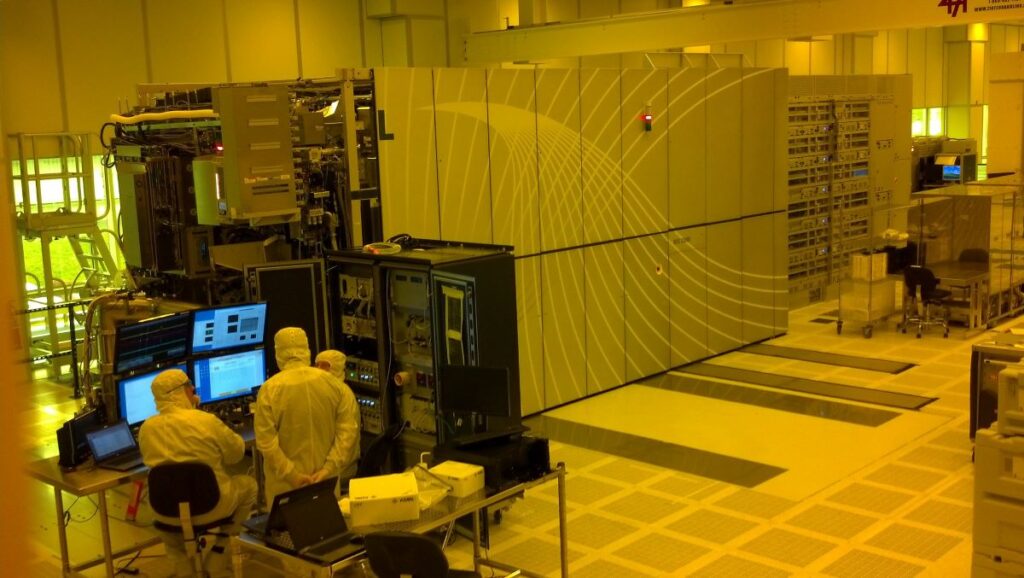The Red cell project
The Red Cell was a small unit created by the CIA after 9/11 to ensure the analytic failure of missing the attacks would never be repeated. It produced short briefs intended to spur out-of-the-box thinking on flawed assumptions and misperceptions about the world, encouraging alternative policy thinking. At another pivotal time of increasing uncertainty, this project is intended as an open-source version, using a similar format to question outmoded mental maps and “strategic empathy” to discern the motives and constraints of other global actors, enhancing the possibility of more effective strategies.
U.S. geoeconomic statecraft has developed at light speed during the last several years. Aiming at stopping China’s technological progress, new tools such as outbound investment controls and bans on imports from tech companies like Huawei have been created, and old tools such as tariffs have been reinstated. At the heart of the new U.S. “tech-containment” strategy are export controls. In September 2022, National Security Advisor Jake Sullivan described export controls as a “new strategic asset in the US and allied toolkit.” Prior to the administration’s launch of the National Security Strategy 2022, Sullivan formulated a new paradigm for such controls:
On export controls, we have to revisit the longstanding premise of maintaining “relative” advantages over competitors in certain key technologies. We previously maintained a “sliding scale” approach that said we need to stay only a couple of generations ahead. That is not the strategic environment we are in today…We must maintain as large of a lead as possible.”
He later described the approach as a “small-yard, high-fence” strategy: establishing high barriers for the dissemination of a “narrow slice of technologies.” On October 7, 2022, the meaning of Sullivan’s phrase became clear when the Bureau of Industry and Security amended its Commerce Control List (CCL) for dual-use items and published a list of new controls that squarely aimed at slowing down China’s progress in developing artificial intelligence (AI) capabilities. The vector to do this would be high-end semiconductors. The new rules were radically different from earlier export controls because their scope was very broad — targeting the entire supply chain of AI-relevant semiconductors by combining controls over specific items, specific end uses, specific end users, and activities by U.S. persons or corporations.
Whack-a-Mole
Initial signs seem to confirm that the new controls have made an immediate impact. Semiconductor output in China dropped 17% year-over-year for the first two months of 2023. However, it soon became apparent that the October 2022 sanctions also created a new business environment and that companies have reacted to this new state of affairs. Nvidia downgraded its AI-enabling chips H100 and A100 by lowering the data exchange rate below the thresholds of the October 2022 rules. Similarly, Intel developed a chip for the Chinese market. To train AI, Beijing simply needs to acquire some more of the downgraded chips. The short-term impact of the controls on China’s semiconductor production machinery was a surge in Chinese imports of U.S. technologies before controls went into effect. Advanced Semiconductor Materials Lithography’s (ASML’s) sales to China increased by 64.8% year over year.
This triggered another round of “adjustments” in October 2023 by removing the interconnect speed parameter (capturing the new Nvidia chips), adding more semiconductor manufacturing items, and expanding the licensing requirements to more than 40 countries susceptible to re-exporting technology to China. Finding the news about Chinese progress in semiconductors “incredibly disturbing,” U.S. Secretary of Commerce Gina Raimondo called for “more and better tools,” adding that these regulations might be adapted “at least annually.” Predictably, Nvidia reacted again. Just a month later, media reported about another line of “control-optimized” chips being shipped to customers in China for testing. Quincy Institute Research Fellow Jake Werner has rightly pointed out that “every existing exclusionary initiative, no matter how ‘tailored,’ inevitably leaves gaps and loopholes.”
Applying the “Chokepoint Theory”
This emphasis on export controls in the context of geopolitical competition with China assumes that tech value chains feature some “choke points” that could be leveraged to achieve geopolitical goals. As far as this author knows, the idea goes back to a series of articles published by Carrick Flynn and Saif Khan in 2020, then researchers at Georgetown University’s Center of Security and Emerging Technologies. The idea was echoed by the National Security Commission on Artificial Intelligence in 2021, which mentioned “choke points” 14 times. The report argues that semiconductor manufacturing equipment was the best chokepoint option for export controls. No semiconductor industry representative was a member of the commission, thus confirming the age-old wisdom: If you are not at the table, you are on the menu.
The problem with the chokepoint paradigm is that it has been accepted as a policy foundation without having been tested. First, the concept of a “choke point” lacks a clear definition. To pick one example, Stanford University’s Philip Wong and Jim Plummer use the terms “choke point” and “leading position” interchangeably. Second, outside of the policy bubble, it is difficult to find supporters for the idea that such chokepoints can exist for long. Managers at semiconductor companies are anxious about the competitive pressure. From their point of view, semiconductor manufacturing is mostly about applying science. There is more than one way of achieving one’s goals; hence, there is no “secret sauce” that can protect anyone for long. Restricting access to technology first and foremost incentivizes the replacement of it. This is even true for those parts of tech supply chains that are hardest to replace. ASML’s lithography machines might have earned the title of the hardest-to-replace piece of technology: Extremely complicated and expensive, they are the result of the coordination of hundreds of highly specialized suppliers. No wonder the U.S. government has pressured the Dutch government to prevent ASML from delivering machinery to China. However, those who should know best — ASML executives themselves — acknowledge that technological leadership is much more ephemeral than policy wonks tend to think. The risk of “designing out”1 Designing out is deliberately eliminating something through a plan. of technologies subject to export controls is real. Huawei’s replacement of Qualcomm chips in its Mate 60 Pro — leading to a loss of 60 million chip sets sales for Qualcomm in 2024 — will most likely be one of many such impacts to come. The U.S. Chamber of Commerce in China estimated that an unmitigated complete loss of access to the Chinese market would imply a decrease in sales of $83 billion annually and a loss of 124,000 jobs for U.S. companies. An analysis by Rhodium Group further concluded that the costs to U.S. semiconductor manufacturing equipment companies would range between $1.4 and 5.2 billion in annualized sales.
Handing China the Biggest Present of All: An Incentive
One might argue that these costs are justified, particularly in light of national security. In abstract terms, export controls internalize the supposed negative security externalities of semiconductor exports. However, the more important question is whether such controls really help to maintain the United States’ technological leadership. From an American perspective, a crackdown on AI-enabling semiconductors might provide a temporary advantage over China — but this situation only invigorates Beijing’s efforts to rapidly develop its own semiconductor capabilities. As it stands, the current setup provides strong incentives for China — and to some extent for third parties that sell to China — to design out Western technology as much as the U.S. is trying to deny Beijing access to its innovation.
In the past, attempts to strengthen the Chinese semiconductor industry did not lead to any meaningful results. China’s efforts to develop a native semiconductor industry predate the October 2022 controls. The first Chinese strategy papers discussing the risks of semiconductor dependencies were published in 2009. A State Council Guideline for the Promotion of the Development of the National Integrated Circuit Industry published in 2014 established the “National Integrated Industry Investment Fund,” which raised roughly $20 billion and was later recapitalized by another §32 billion in 2019. The early results were unimpressive: Better, cheaper products were available from international companies. With high ambitions to internationalize, Chinese tech companies were reluctant to support a lagging semiconductor industry if that meant becoming disadvantaged in global competition. In addition, the glut led to large-scale corruption and graft on all levels. Local media reports about companies with no track record of receiving funding increased.
The establishment of U.S. export controls had a huge — and ironically beneficial — impact on Chinese efforts to build an indigenous semiconductor industry. First, the sector then had the full attention of the Chinese Communist Party leadership because the lack of progress and the amount of money spent until then was no longer acceptable to an impatient President Xi Jinping. The crackdown on corruption came hard and fast. In the summer of 2022, half a dozen Chinese managers were investigated for corruption. Second, the U.S. export controls removed choice for Chinese semiconductor customers. The biggest difference between previous attempts to capture more of the semiconductor chain in China and today’s situation is the urgency and willingness of local customers to invest in Chinese chips. In an interview, the Chinese managing director of a major European semiconductor chemical company called the semiconductor blockade a “major strategic miscalculation” because it turbo-charged China’s effort to become less dependent. Unsurprisingly, the Chinese semiconductor industry welcomed the new U.S. controls because they supposedly further increased demand for Chinese semiconductors. According to CNBC, a partner at a Chinese investment fund called them “great news.” As the influential Chinese tech blogger Boss Dai wrote:
The biggest side effect of this all-industry blockade by the United States is that it has given China the opportunity to rely on market mechanisms — rather than pure planning power — to solve the problem of “卡脖子 technology stranglehold.” . . . Before the chip war, China had many struggling equipment, material, and small chip companies that were difficult to compete with foreign counterparts. Companies like SMIC, JCET, and even Huawei did not pay much attention to them because they could buy more mature and cost-effective foreign products. However, the US blockade of the Chinese chip industry has brought a rare opportunity for these companies.
The company that Washington aims to hit the hardest by U.S. controls — Huawei — might play a key role in this regard. It will pull an entire industry sector with it, upgrading an innovation ecosystem as it sends engineers to help upscale its suppliers in China rather than relying on international alternatives. In August 2023, reports about a new Huawei graphics processing unit that is supposedly on the same level as Nvidia`s A100 chip appeared in the press.
Trading Short-Term Advantages for Long-Term Dominance
China believes it can overcome the restrictions imposed on it by U.S. geotech statecraft. “While it will take years for the picture to become clearer, it seems that so far, the constraining effect of the controls targeting China’s access to semiconductors and against Huawei are less than hoped for,” John Lee, director of the East-West Futures consultancy, told the author of this brief. In another interview, Paul Triolo, associate partner at Albright Stonebridge Group, called the outcome of U.S. export controls the “technology equivalent of de-dollarization.”
Arguably, the damage has already been done. China will not stop its effort to design out Western tech even if the controls on semiconductors are to be reversed. From a Chinese perspective, the risks of being dependent on Western tech were felt long before these latest controls. Therefore, it is crucial for the U.S. government to better understand technological innovation processes and the potential impact of controls, or risk creating adverse impacts on both U.S. companies and Washington’s own goals.
Particularly worrying is the tendency to scandalize companies that try to educate policy-makers on how tech innovation works. The scandalization-prone Congressional “Select Committee on the Strategic Competition Between the United States and the Chinese Communist Party” plays an unfortunate role in this regard. Rep. Mike Gallagher, chairman of the House Select Committee on the Strategic Competition Between the United States and the Chinese Communist Party, told the Wall Street Journal recently, “We want American companies to act like American companies.” Speaking truth to power is a core American value and the essence of every democracy. And the truth is that the chokepoint approach to export controls will do more harm than good.
Ansgar Baums is Helmut-Schmidt-Fellow of the German Marshall Fund and Zeit-Stiftung and coauthor of the forthcoming book, The Tech Cold War (Lynne Rienner publishers).
Notes
- 1Designing out is deliberately eliminating something through a plan.




